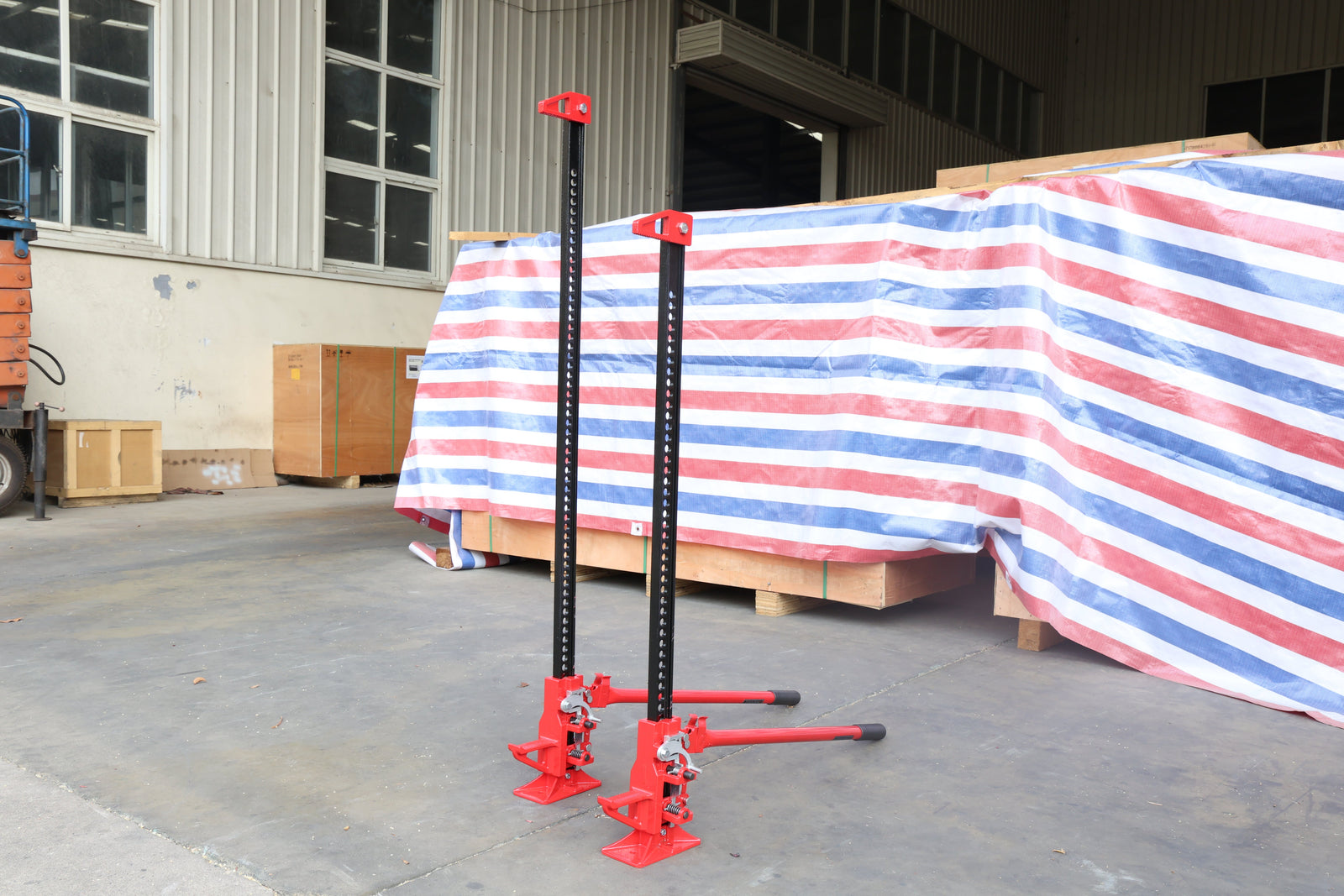The Versatile Farm Jack: A Must-Have Tool for Every Farmer
The farm jack, also known as a handyman jack or hi-lift jack, is an indispensable tool for farmers, homesteaders, and anyone tackling heavy-duty tasks in rugged environments. Its robust design and versatility make it a go-to for lifting, pulling, and even clamping, whether you're on the farm or off-road. In this post, we’ll explore why the farm jack is a game-changer, how to use it effectively, and tips for choosing the right one for your needs.
Why the Farm Jack Stands Out
Unlike standard jacks, farm jacks are built tall and tough, originally designed to lift heavy farm equipment like tractors and combines. With a lifting capacity often exceeding 7,000 pounds and heights up to 60 inches, they can handle a wide range of tasks. From pulling fence posts to lifting vehicles out of mud, the farm jack’s durability and mechanical advantage make it a reliable companion for demanding jobs.
Here are some key uses:
-
Lifting Equipment: Easily hoist tractors, mowers, or other machinery for maintenance or tire changes.
-
Fence Work: Pull T-posts or wooden posts with minimal effort using a chain and the jack’s lifting mechanism.
-
Off-Roading: Free stuck vehicles or adjust heavy loads in the field.
-
Clamping and Spreading: Use it to stabilize or spread materials, like when repairing a shed or stretching wire fencing.
How to Use a Farm Jack Safely and Effectively
Using a farm jack is straightforward but requires care to avoid injury or equipment damage. Here’s a step-by-step guide for pulling a fence post, one of its most common applications:
-
Prepare the Area: Clear debris around the post to prevent tripping or flying objects. Wear safety glasses and gloves for protection.
-
Stabilize the Jack: Place a sturdy wooden plank under the jack’s base to distribute weight and prevent sinking into soft ground.
-
Secure the Post: Wrap a chain tightly around the post, hooking one end through a chain link and the other through the hole in the jack’s moving portion.
-
Operate the Jack: Hold the jack steady with one hand and move the handle up and down slowly. The jack will climb, pulling the post smoothly out of the ground.
-
Stay Cautious: Keep your face and body clear of the handle, which can snap upward under tension. Never work under a load supported only by the jack.
For detailed instructions on other tasks, like lifting a vehicle, always consult the manufacturer’s guidelines and ensure the jack is rated for the weight.
Choosing the Right Farm Jack
Not all farm jacks are created equal, and quality matters when safety and performance are on the line. Here are some tips for selecting a reliable model:
-
Brand Reputation: Opt for trusted brands like Hi-Lift, known for durable, American-made jacks. Avoid unbranded or overly cheap models, as they may fail under load. Some users report issues with low-cost jacks, like those recalled by Harbor Freight for base separation under pressure.
-
Material Quality: Choose an all-cast model over cast-and-steel combinations for greater durability. Look for a weight capacity of at least 4,000–7,000 pounds and a lifting height suitable for your needs (48” or 60” are common).
-
Maintenance Needs: Regular maintenance, like oiling the mechanism with penetrating oil (e.g., PB Blaster), extends the jack’s life and prevents sticking. Avoid WD-40, as it’s less effective for this purpose.
-
Price vs. Value: Prices range from $50 for budget models to $100–$150 for high-quality ones. Investing in a reputable brand ensures safety and versatility, saving you money in the long run.
Real-World Applications from Farmers
Farmers across the globe swear by the farm jack’s versatility. On Reddit’s r/homestead, users share stories of using farm jacks to pull T-posts, free mowers from mud, and even move small sheds. One farmer noted, “Hi-Lift jacks make pulling posts cake, but you can also use them for stretching fences or lifting tractors.” Another emphasized maintenance: “Oil it before and after use, and it’ll last decades.”
At our farm, we recently used a farm jack to remove old cedar posts for a new pasture fence. The process took minutes per post, saving hours of digging and back strain. We also used it to lift a stuck ATV out of a ditch, proving its value beyond traditional farm tasks.
Safety First: Avoiding Common Pitfalls
Farm jacks are powerful but can be dangerous if mishandled. The handle’s upward snap can cause serious injury, as one user shared: “I still have a scar from when I was a kid. It hit me so hard I flipped backward.” Always:
-
Keep children and bystanders at a safe distance.
-
Double-check chain or load security before lifting.
-
Use additional supports (e.g., jack stands) when working under heavy equipment.
Conclusion
The farm jack is more than just a tool—it’s a problem-solver that every farmer should have in their arsenal. Its ability to lift, pull, and clamp makes it a versatile ally for both routine and unexpected challenges. By choosing a high-quality model, maintaining it properly, and using it with care, you’ll unlock its full potential for years to come.
Have a farm jack story or tip to share? Drop a comment below or tag us on social media with #FarmJackHacks to join the conversation!

